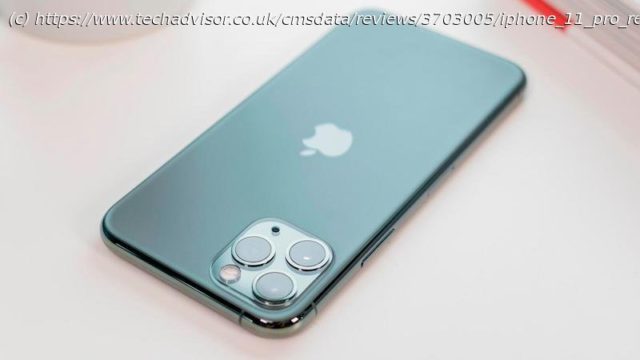It’s debatable how dissimilar the iPhone 11 Pro is to the standard 11, but it still nails the fundamentals better than any iPhone ever.
If you were to run a survey to find out what most people want in a new smartphone, they’d probably say they want something that looks great, performs well with a decent battery and, of course, a great camera system. Funnily enough, that’s what you get with the iPhone 11 Pro. But to complicate things, it’s also what you get with the iPhone 11, which costs £320/$300 less. The Pro is certainly an upgrade, but it doesn’t do a lot to justify its «Pro» branding or price. You can see how it scrubs up to the rest of the range in our best iPhone chart. That being said, the iPhone 11 Pro is a phenomenal iPhone with some obvious (and not-so-obvious) improvements over previous offerings. Note: This review refers to the iPhone 11 Pro as a single entity, though we tested both the iPhone 11 Pro and iPhone 11 Pro Max. The only difference between the two phones is that the Max is larger and has longer battery life. It’s best to just think of the iPhone 11 Pro as a single product that comes in two sizes. When it comes to modern flagships, most are extremely fragile, which is why about 99 percent of them are stuffed into a case at the point of opening. Sporting a new frosted glass rear made out of a single piece of glass – including the camera bump – Apple claims that this is the toughest glass in a smartphone, and that the iPhone 11 Pro is the toughest smartphone ever. Bold claims. Of course, we’re not about to smash a couple of brand-new iPhones to find out, but a lot of YouTubers who specialise in that sort of thing have. They unanimously praise the durability of the iPhone 11 Pro; it’s certainly not indestructible, and you can definitely still shatter it with a particularly nasty drop, but it’ll take more of an impact to cause serious damage than any iPhone before it. There’s also improved waterproofing on offer, with the 11 Pro capable of surviving up to 30 minutes at a depth of 4m, and that’s better than most competing phones too. It goes without saying that if you’re going to spend a grand on a phone, it should be built to last, but that’s not the be-all. It should also look good, and while the iPhone 11 Pro doesn’t look too different than the iPhone XS from last year, there are a few minor changes on offer. The big square camera module on the back, while a lot to take in initially, isn’t as much of an eyesore as it at first appears and you’ll stop noticing it within a few days. It’s the frosted effect that makes all the difference: the frosted glass gives the phone a matte finish that is a huge improvement on the glossy, fingerprint-magnet finish of the iPhone XS, let alone the Piano Black iPhone X – anybody else remember that? And the new colour, Midnight Green, is the perfect addition to the standard Space Grey, Silver and Rose Gold options. One of the key “Pro” improvements of the iPhone 11 Pro is supposed to be its display. It’s an OLED display with the same resolution as last year’s iPhone XS, albeit brighter and more energy-efficient (at equivalent brightness) this time around. Apple claims the display goes up to 800 nits during normal viewing, and 1,200 nits when viewing HDR content, but in real life, you won’t really notice. Side-by-side with the iPhone XS Max, you can’t really see any difference when viewing HDR content like Blade Runner 2049. Both look gorgeous, but you have to really pixel-peek, holding both phones side-by-side, to see a difference. It’s much the same in bright daylight: while it’s easier to see that the iPhone 11 Pro’s display is brighter when doing normal tasks, the difference isn’t so stark that you’ll suddenly be able to use your phone at the beach without a bit of shade. If you weren’t holding it next to last year’s iPhone, you probably wouldn’t even notice the difference. Apple has branded the iPhone 11 Pro’s display as «Super Retina XDR», and even suggests it delivers the «experience» of its ultra-high-end Pro Display XDR. Let’s clear this up: there’s no such thing as «extreme dynamic range» or XDR, both are made-up Apple marketing phrases. As much as the company would like it to, he iPhone 11 Pro’s mobile display can’t hold a candle to the 10-bit colour or brightness of Apple’s new pro studio monitor. You might be reading that and thinking that the iPhone 11 Pro display is a disappointment, but that’s not the case – it is gorgeous, detailed and vibrant, it’s just that it’s barely better than the fantastic OLED display on last year’s iPhone XS. Apple’s high-end iPhones have had a wide and telephoto camera duo on the rear of the phone for a few years, so it was about time for Apple to switch things up – and that’s what it did with the iPhone 11 Pro and its third ultra-wide camera. Landscape photographers will find a lot to enjoy with the new ultra-wide lens, but I think even the everyday user will find themselves using ultra-wide quite often – especially as you get a preview of the potential ultra-wide framing within the updated Camera UI.
Домой
United States
USA — software iPhone 11 Pro review: Nothing 'Pro' about it, just the best iPhone...






